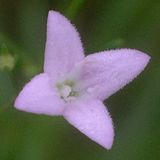
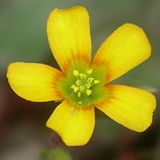
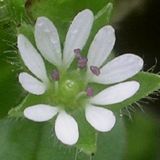
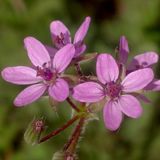
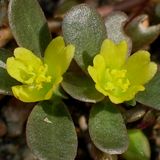
Looking out at fields along the road or the brown lawns in most neighborhoods would make one think that all the vegetation is dead. But a closer look at what's at our feet reveals that there is a lot more going on than just spent grass and last year's plant remnants. We're used to seeing greenery on live oaks and other evergreen shrubs and trees throughout the winter, but the same hue appears insignificant down on the ground. And yet, the yearly cycle of most annual herbs has already begun by November.





Starting in late autumn, the lack of blazing hot temperatures and the more abundant rainfall signal all manner of seeds to germinate. Down beneath the grass debris and hugging the bare patches of soil are countless bright green seedlings. They often have downy fuzz on their foliage and habitually grow very flat, both adaptations to maximize heat retention and to avoid freezing to death. In snuggly little niches are miniature gardens of perfect tiny leaves. Some will need months to grow large enough to blossom, adding their colors to the celebrated Hill Country spring flower show. But some of these small plants, before it would ever be expected, bloom. As if created for Lilliputians, whole landscapes of beautiful dainty blossoms happily greet the sun, in patches measured in centimeters rather than acres. They are nearly invisible from our tall vantage point, but they are there, and, because flowers are not simply useless decorations, so are their pollinators.
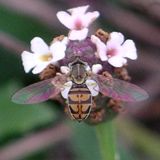
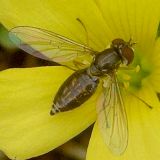 Before the Mexican plum, bluebonnets, redbuds, and lilies bloom, myriad diminutive plants both provide food for and take advantage of tiny flying insects such as gnats, mosquitoes, and syrphid flies. Beetles no more than 3 millimeters long, ants, and impossibly tiny wasps visit flowers that are every bit as lovely as their bigger cousins but are simply off our radar due to their size. One species of very small hover fly that I see almost all year has different color phases depending on the season. During warm weather, it is mostly yellow with fine black markings. During the cold seasons, though, individuals are much darker, and sometimes almost all black, the better to absorb heat. These insects occur in huge numbers and seem to be a major pollinator of little flowers.
Before the Mexican plum, bluebonnets, redbuds, and lilies bloom, myriad diminutive plants both provide food for and take advantage of tiny flying insects such as gnats, mosquitoes, and syrphid flies. Beetles no more than 3 millimeters long, ants, and impossibly tiny wasps visit flowers that are every bit as lovely as their bigger cousins but are simply off our radar due to their size. One species of very small hover fly that I see almost all year has different color phases depending on the season. During warm weather, it is mostly yellow with fine black markings. During the cold seasons, though, individuals are much darker, and sometimes almost all black, the better to absorb heat. These insects occur in huge numbers and seem to be a major pollinator of little flowers.
While the small plants that bloom before spring has actually sprung are mostly considered weeds, the term is relative: a weed is just a wildflower that is not wanted. Being very small does have its advantages, including not being noticed. But the next time you are out walking in a field at this time of year, admiring the golden grass heads waving in the wind, artistically gnarled leafless tree limbs, and glorious cloud formations, take a close look at the ground. The understated beauty of our delicate early annuals may just surprise you.
| Lots of Little Flowers |